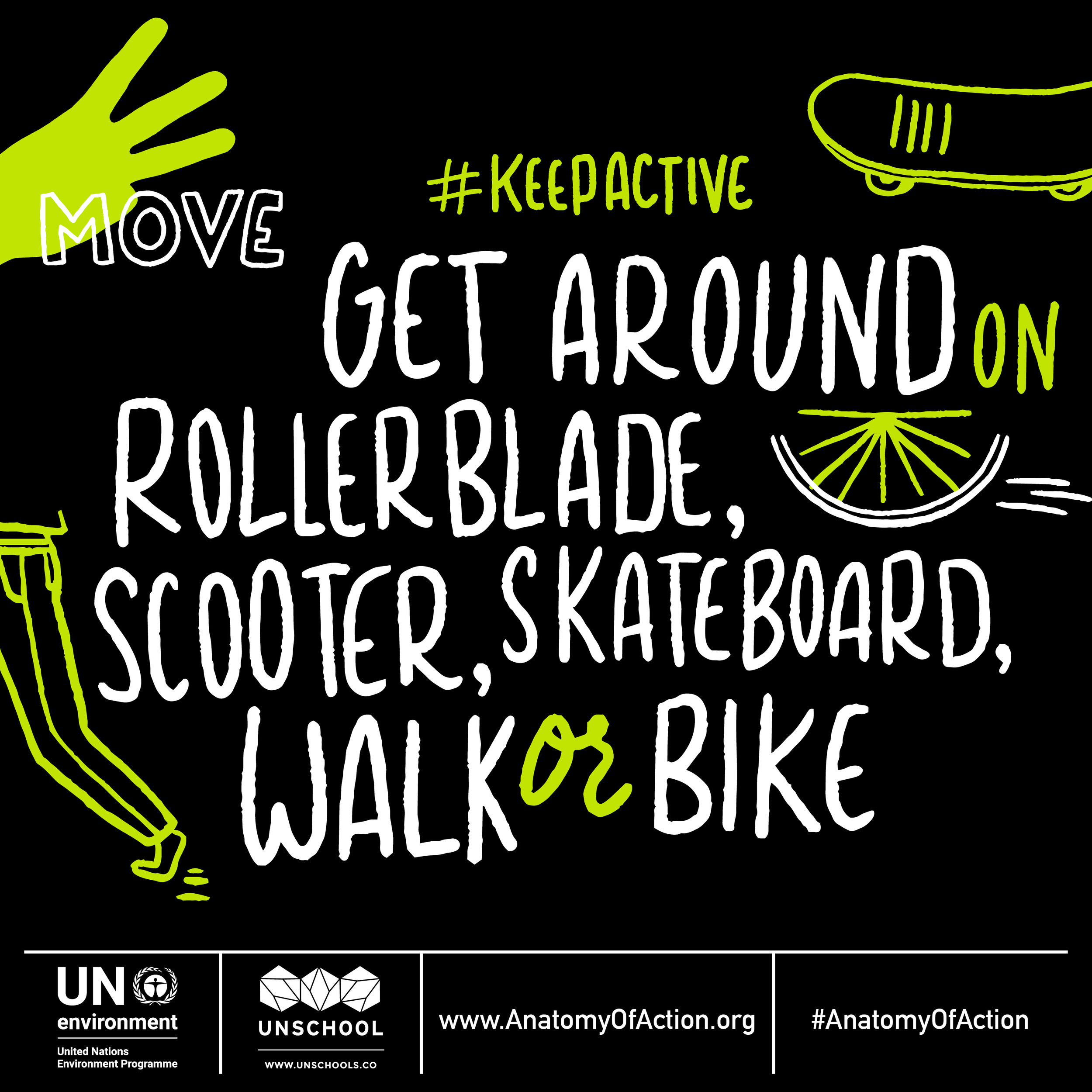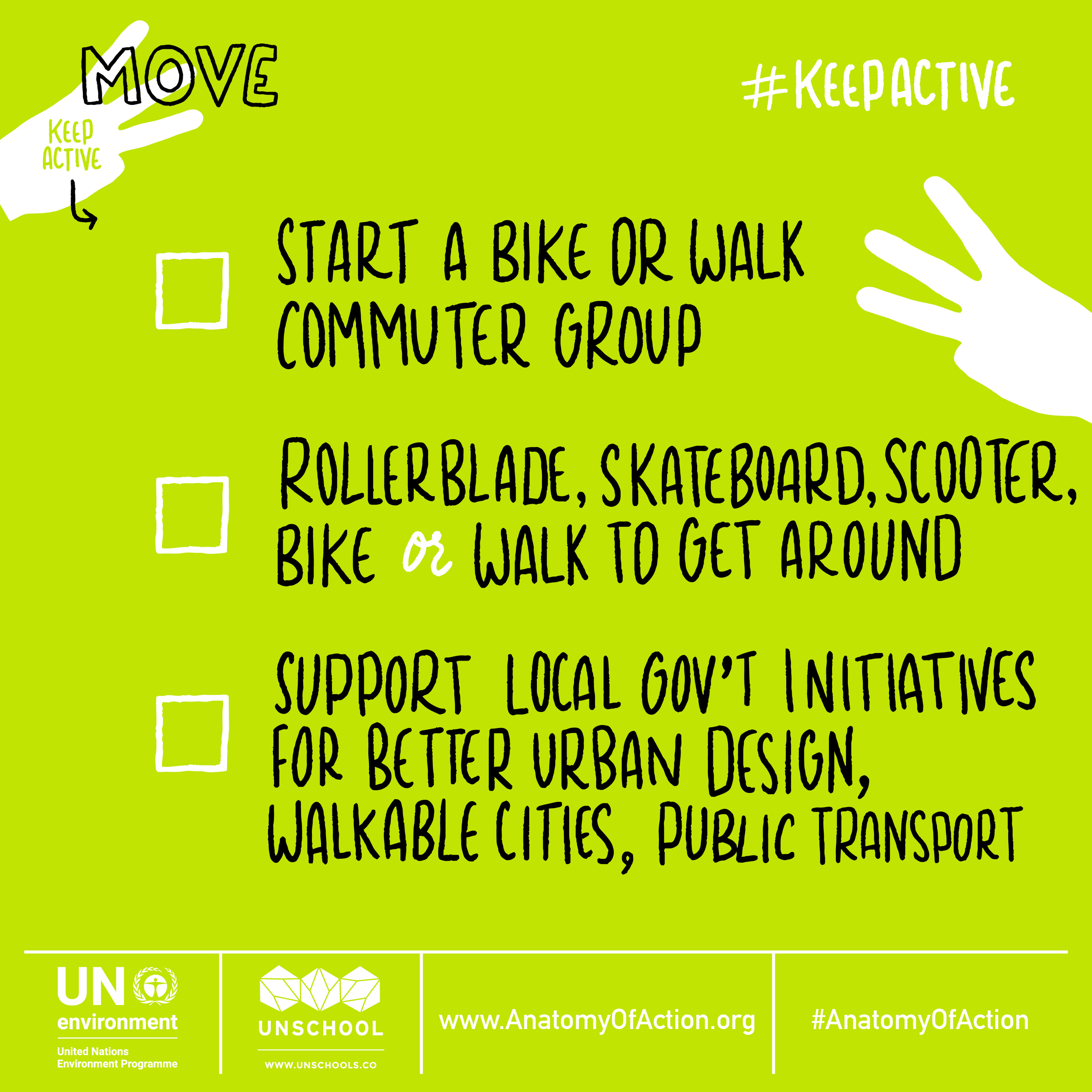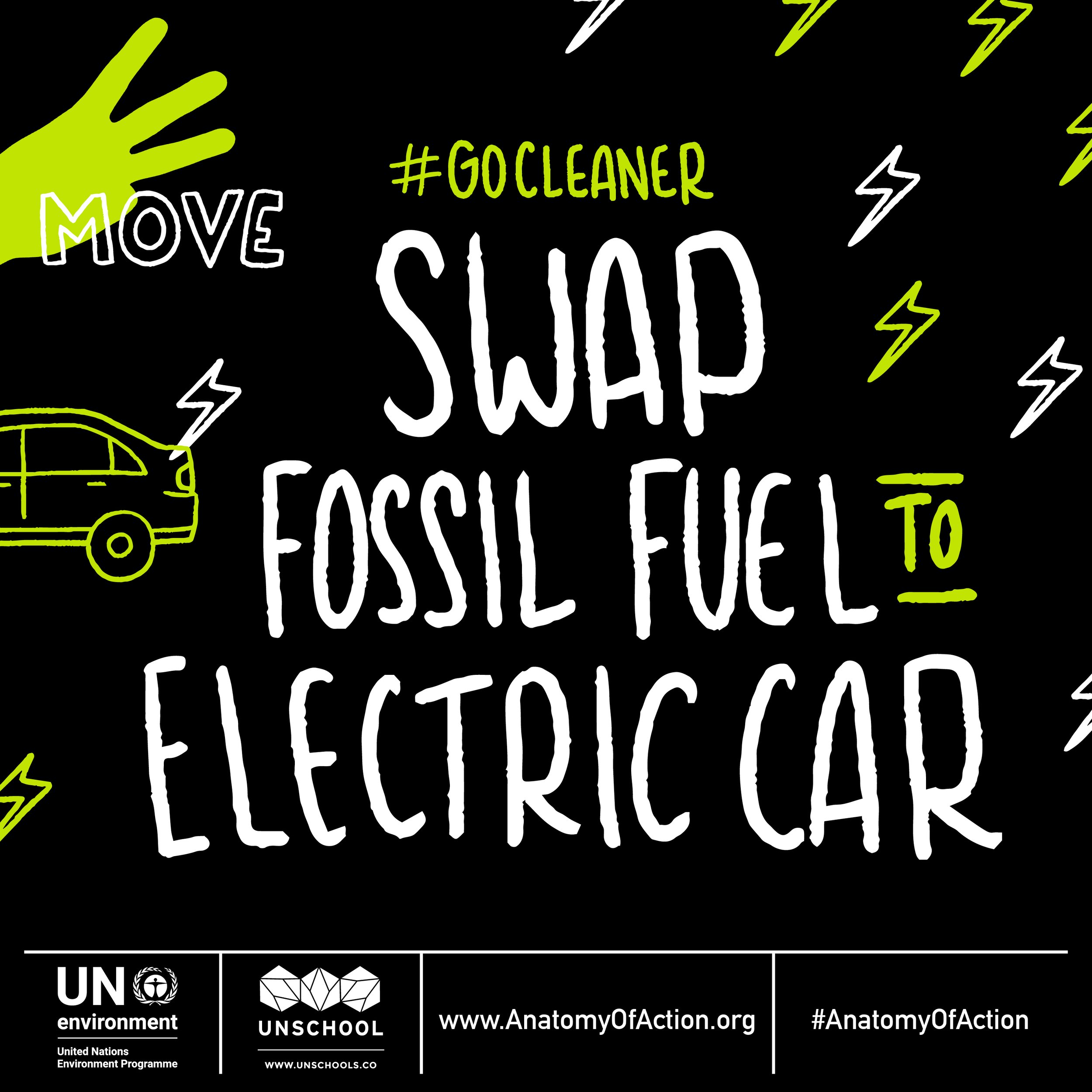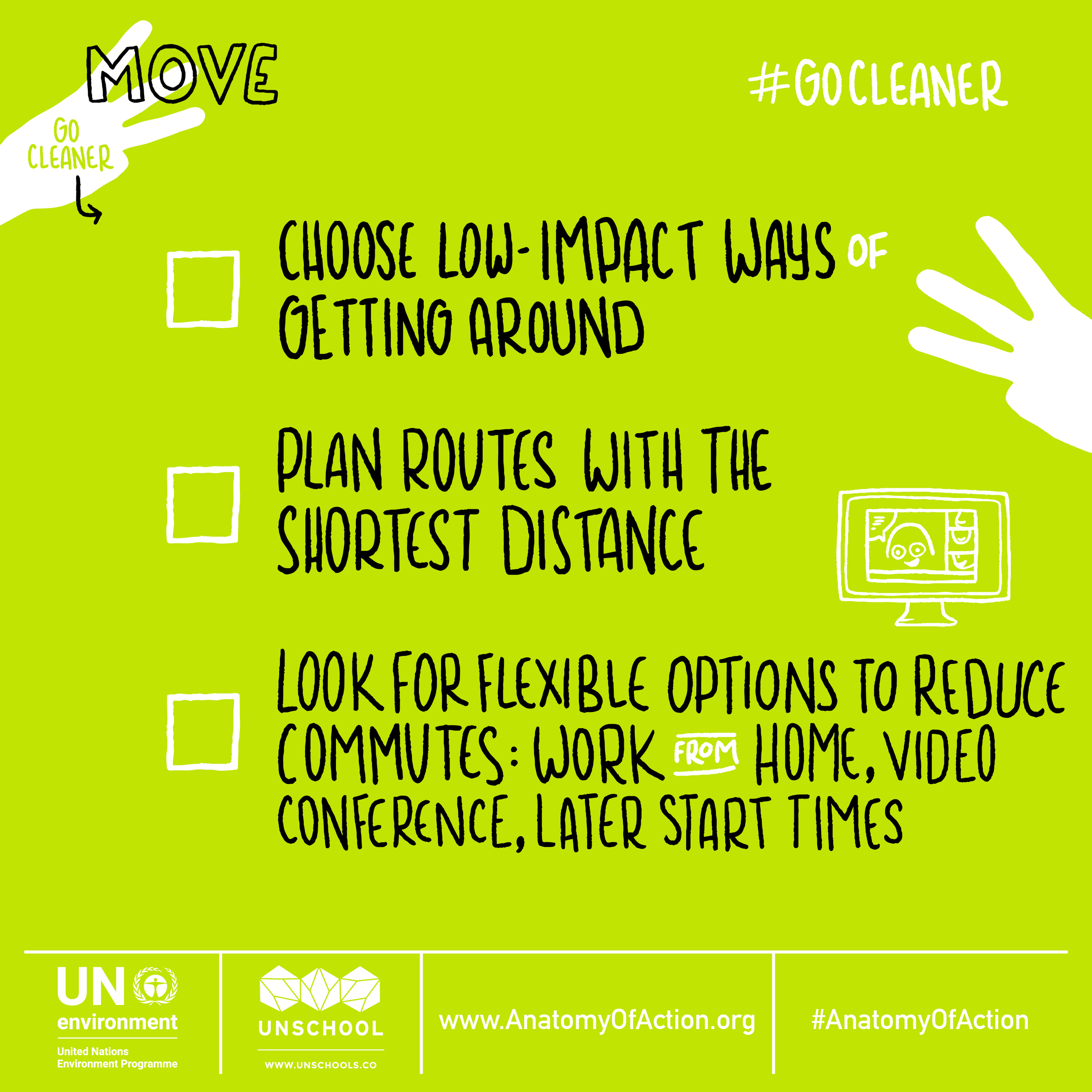There’s no denying that we live in the age of busy — we are continuously on the go, living amongst a chaotic frenzy of personal responsibilities, appointments, leisure activities, and whatever else is demanding our presence and attention. But the way we move has led to some devastating impacts for our home planet and for all the people who inhabit it, like soaring carbon dioxide emissions and dangerous amounts of air pollution. Reducing these emissions is, without a doubt, a matter of life or death, as at least 3.7 million people die each year as a result of outdoor air pollution, and transportation currently contributes 23% of all carbon dioxide emissions.
We all have to get places, and the impact we each have on climate change and air pollution is directly attributed to our transport choices. You can opt to drive less, share your ride, and swap to electric. Let’s dive into how the Anatomy of Action (AoA) explores the different ways you can move around your community to swap to having more intentionally positive impacts.
Action 1: Keep Active
Humans around the world are sitting more than ever before in our human history, and much of the push to a sedentary lifestyle involves a long commute paired to work that is paired with sitting at a desk all day. These sedentary lifestyles have quickly taken a toll on human health, with over 300 million adults around the world being categorized as obese.
Then there is the environmental impact that all this individual vehicle use is having, but there are many ways to transport yourself from one place to another, offering a perfect opportunity to use your body to get around. Human-powered transport, like walking, biking, skateboarding, are great for a variety of reasons; it’s much cheaper, cleaner, and better for your general health, and the increase in more human forms of mobility often increases road safety. According to this research, “Increasing median daily walking and bicycling from 4 to 22 minutes reduced the burden of cardiovascular disease and diabetes by 14%, increased the traffic injury burden by 39%, and decreased greenhouse gas emissions by 14%.” By just cycling to work, you reduce your chance of cancer by 45% and cardiovascular disease by 46%. In many places around the world, walking and cycling are the norm, but more can be done to enhance the infrastructure to ensure our cities are more human transport friendly. For example, introducing sidewalks in a city can reduce serious traffic injuries by 25%.
Personal car transportation contributes huge impacts to air pollution and to your carbon footprint, so whenever you can, swap your car rides to human-powered transport options to help reduce these stats, to save costs and time, to reduce noise and congestion, and to encourage a shift in the way we design cities and move around them.
#KeepActive Everyday Actions
Pre-check and choose routes for walking and cycling, give yourself extra time, get exercise, increase your productivity and health and wellness, and reduce your transport impact
Engage with green spaces and support urban conservation projects in your community by using public nature spaces for moving around, like bike paths
Give your productivity and personal wellness a boost by walking or cycling instead of taking short personal car rides
Start a group of people commuting to work at the same time to make a walking or bike ‘bus’ if safety is of concern
Swap short drives for walks or bike rides (or learn to rollerblade, skateboard, or scooter if you want a cooler way to get around)
Support local government initiatives to introduce better urban design, walkable cities, and mass public transport systems
Action 2: Share your Ride
It’s true, sharing is caring! Not only does sharing car rides when you have to take them reduce emissions, but it also saves money. Transportation studies put “the annual cost of congestion at $160 billion, which includes 7 billion hours of time lost to sitting in traffic and an extra 3 billion gallons of fuel burned.” Or, consider this German study which has calculated that “a 10% increase in the modal share of walking and cycling in urban areas would mean that the German GDP would go up by 1.11% by 2030, representing €29bn, based on German GDP in 2012.”
Of course, ride sharing will have positive impacts on air quality, too, which is a crucial point of intervention given that in 2014, 92% of the world population was living in places where the WHO air quality guidelines levels were not met. Rather than taking your car, by walking, cycling, or taking public transport like trains and busses, you not only lower your carbon footprint but also invest in the services to keep them functioning. There are numerous case studies that show the positive flow-on effects of investing in design for human-powered transport or ride sharing — like this one from Portland, Oregon that found “the number of miles of bikeways (lanes, paths, and boulevards) increased 247% from 79 in 1991 to 274 in 2008. This coincided with the share of workers commuting by bicycle rising from 1.1% in 1990 to 6.0% in 2008.”
#ShareYourRide Everyday Actions
Join bike, scooter, or car share services if your city has them
Use public transport and give extra time to yourself (read a book, enjoy music, meet someone new)
Join rideshare apps or start collaborative commuting with your neighbours or friends
When using on-demand taxi services, opt for the green option (if available) and the ride share option
If available, consider intercity or intercountry rail services over short distance flights
Action 3: Go Cleaner
In addition to using your own body to get around and ride sharing, you can opt for electric forms of mobility to help reduce the harmful emissions at the city level caused by petrol-powered transport options. There are multiple benefits of low-carbon mobility, like an improved economy, reduced spending on imported fuel, increased energy security, and of course better human health. Globally we are seeing a rise in electric vehicle use and charging stations, so now is a great time to find ways of swapping to electric.
Many countries are offering financial incentives for low-carbon vehicles, like the UK who provides “100% first year allowance for business owners up to 2021, UK Plug-in Car Grant of £3,500, Exemption from London Congestion Charge, Significant Fuel Savings vs. a comparable Combustion Engine Car and no car fuel benefit for company cars, and Scottish customers can enjoy interest-free loans of up to £35,000 (personal) or up to £100,000”. And it’s not just passenger vehicles that we’re seeing electric options pop up; battery- and fuel cell–electric trucks and buses, especially transit buses, are already in operation across many US cities and are continuously expanding their fleets, not just in the US but also across the world. In fact, the global adoption of electric buses is expected to triple by 2025.
#GoCleaner Everyday Actions
Explore all the options available to you getting around and find which ones have the least impact
Adjust your routes so that you are going the least distance
Swap short distance drives for alternative modes of transport
Look for and ask about flexible working options to reduce your commute, such as working from home, video conferencing or later start times
See if there are leasing services where you can give an electric car or bike a try
Swap your fossil fuel car to an electric one
Use cleaner fuel when you can
Support government or business initiatives that provide alternative fuel and cleaner transport options for your community
Why the AoA?
There are no simple solutions to complex problems, and the transportation issues we face are indeed complex. While the global environmental issues may be big and sometimes overwhelming, they are the outcomes of many individual actions. So, the choices we each make as individuals, as workers, and as members of societies have the potential to reinforce undesirable actions or to create the opportunity for new, more sustainable solutions.
The actions outlined in the Anatomy of Action are are some of the top-level actions any individual can do to help support the global shift toward a more sustainable and regenerative future. No matter who you are, every action you take has an impact, so by taking these more considered actions, you can contribute to a global movement towards activating the SDG’s. There are many other things you can do; this list is by no means an exhaustive account of all the aspects of our lives, but all the actions in the Anatomy of Action offers a starter list that any individual, anywhere can take action on to help make a positive future for all of us!



















